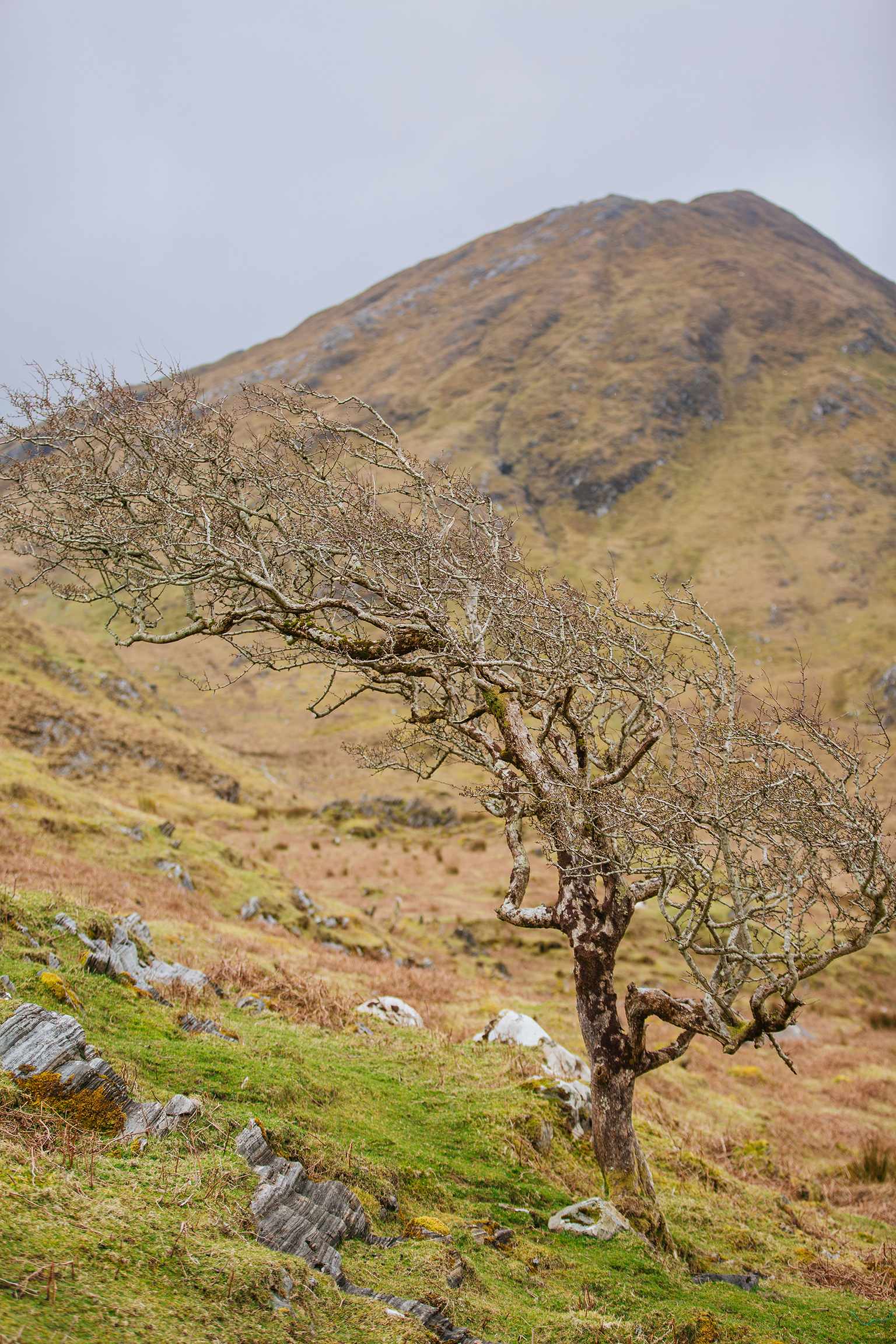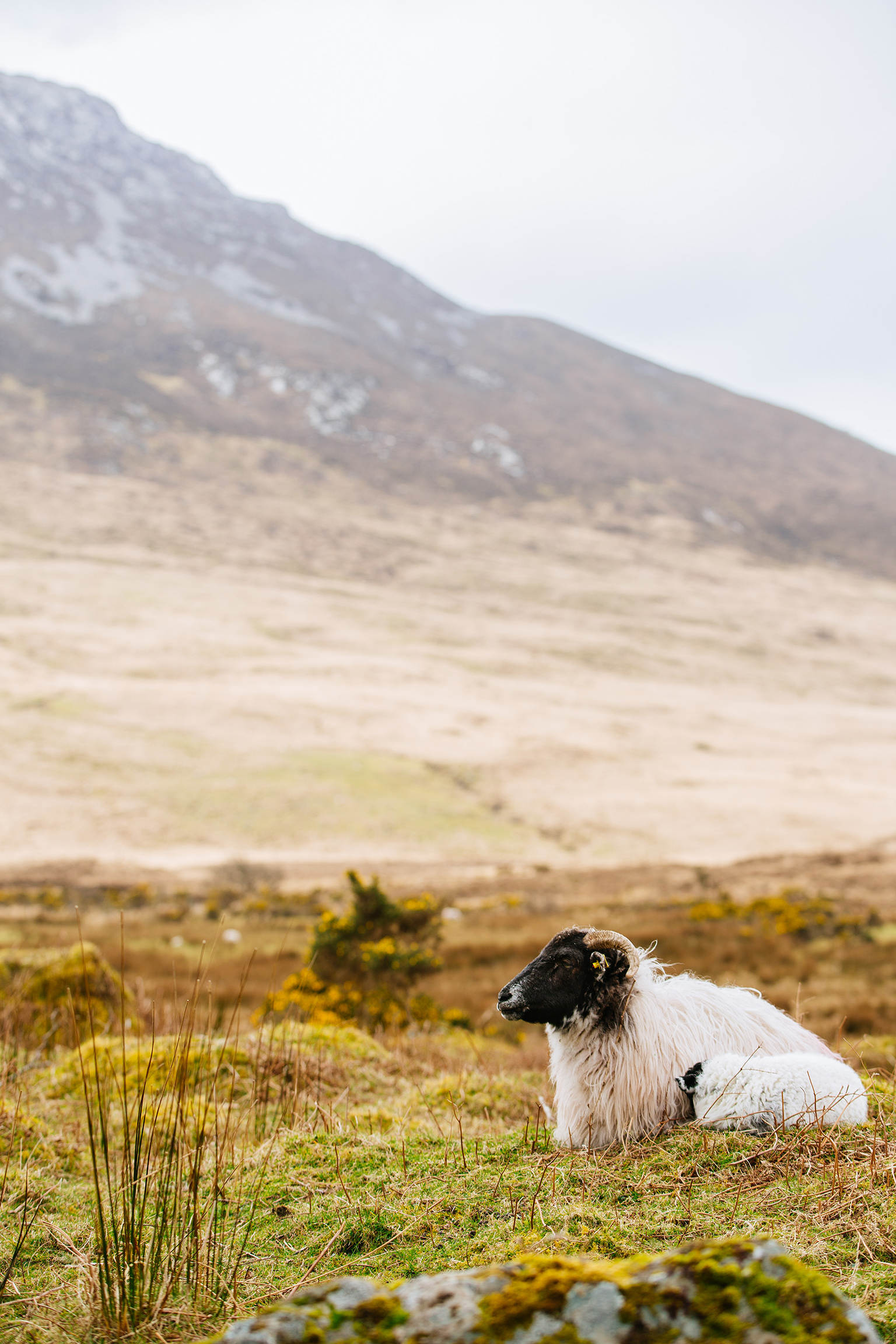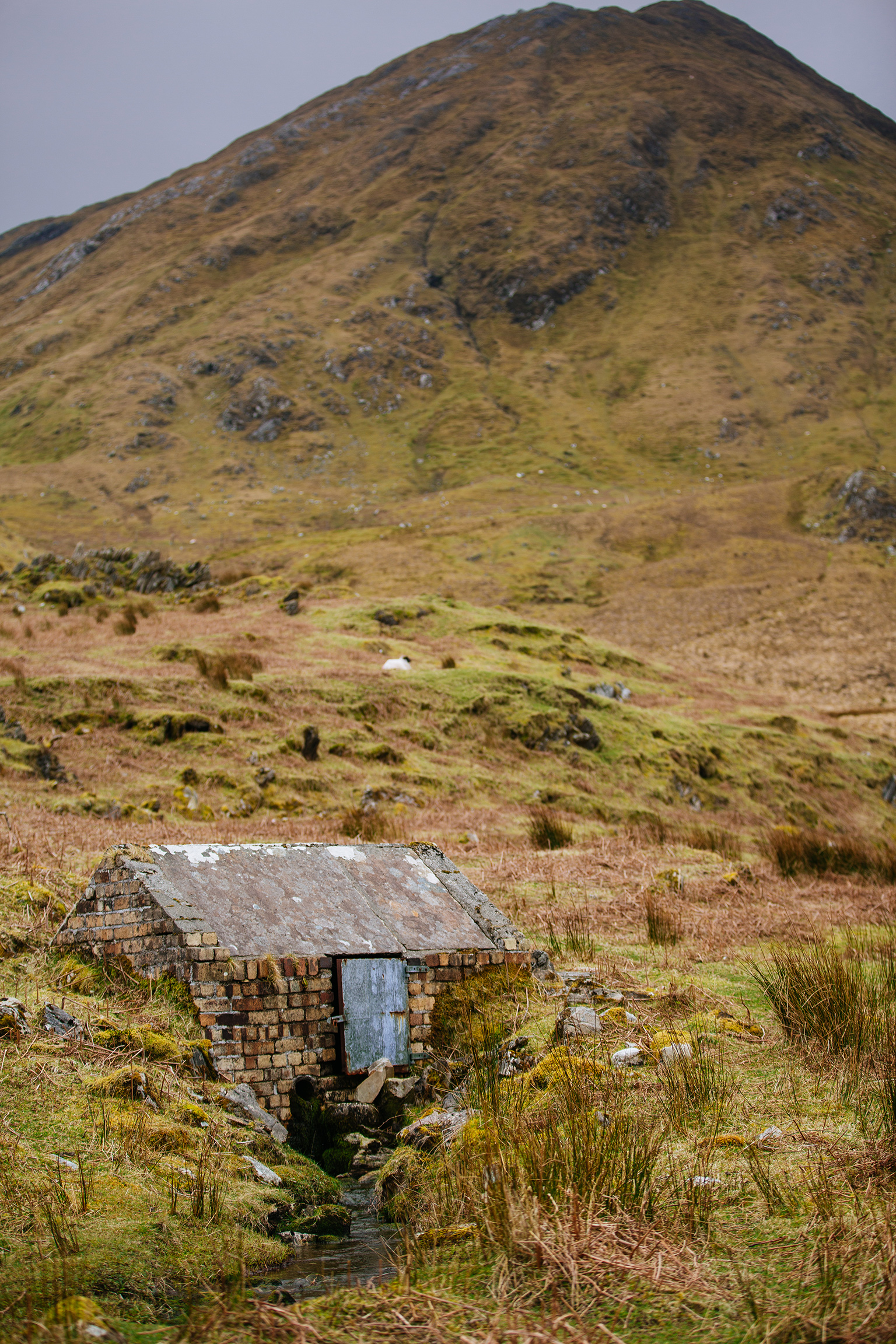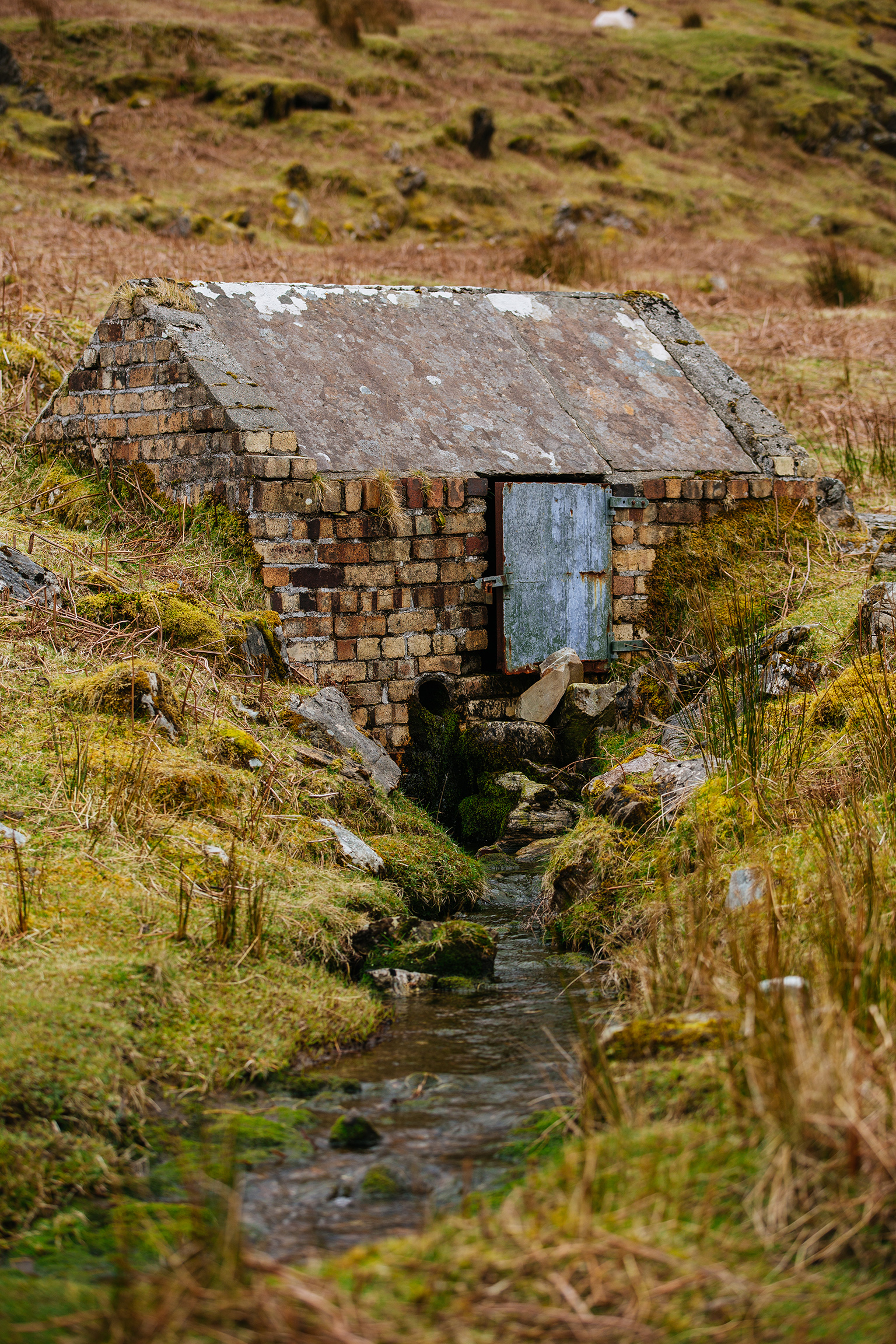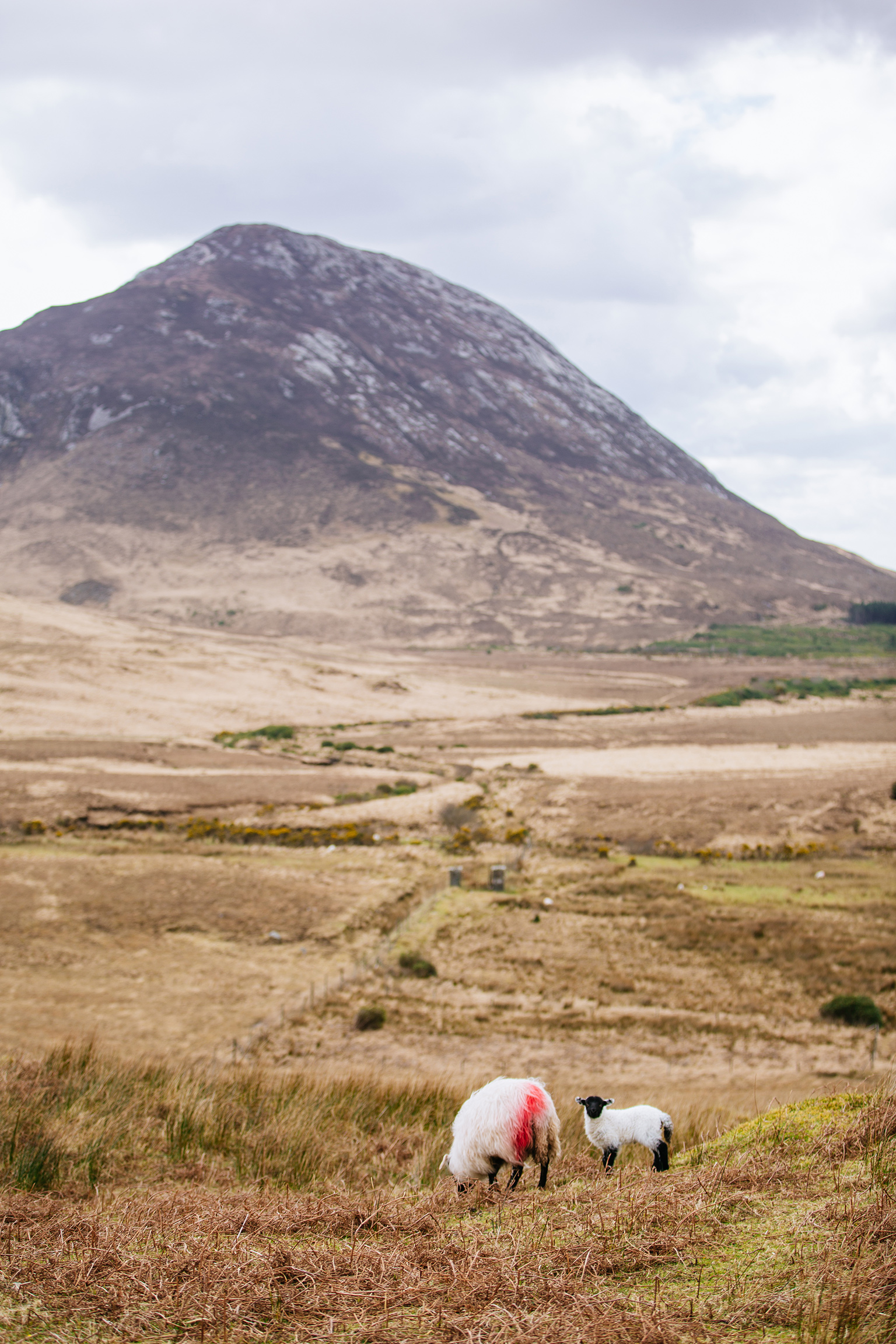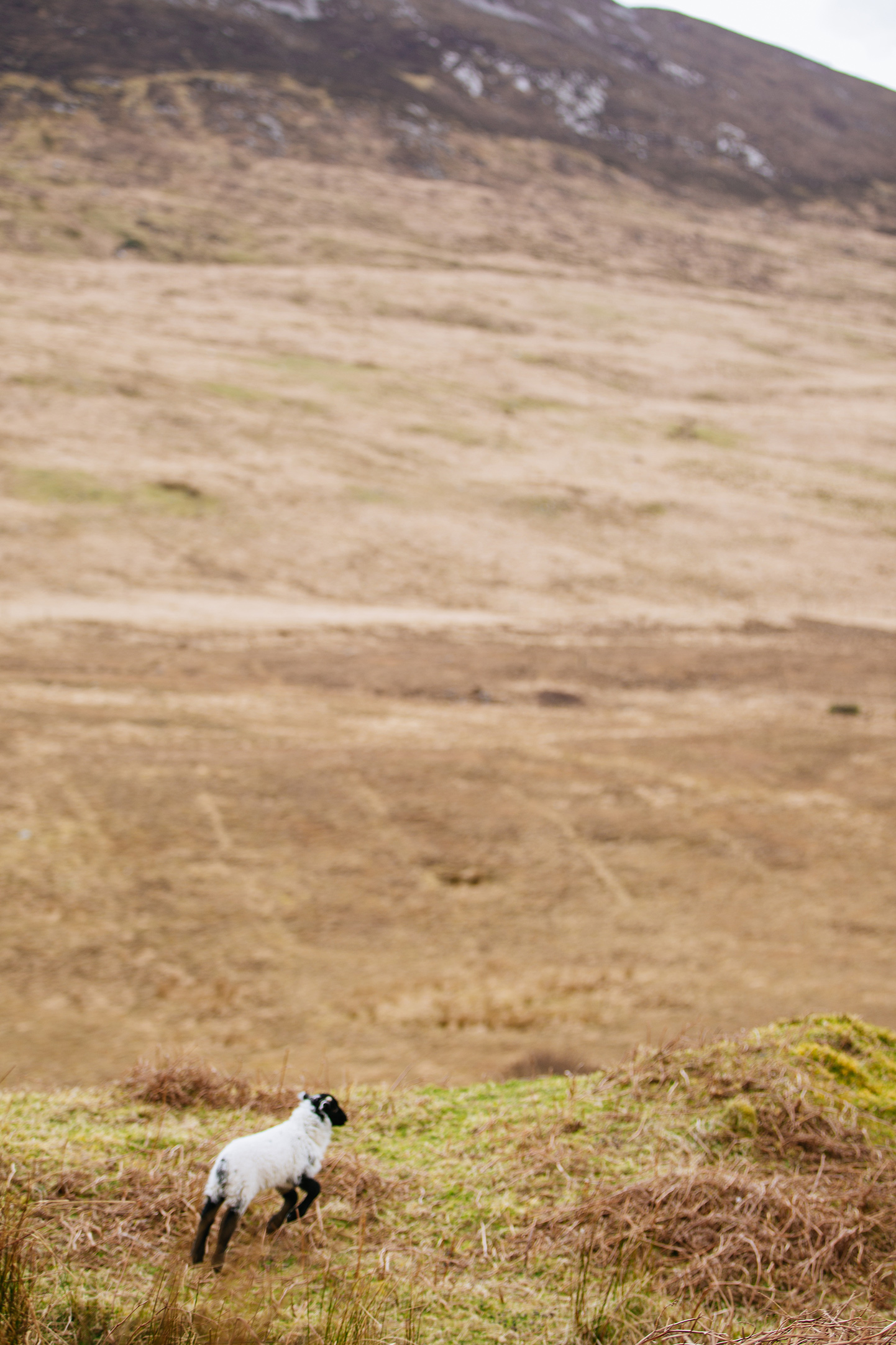A Holy Well
I sat in my rental car in the parking lot of Kylemore Abbey and opened my still-stiff copy of Connemara & Mayo: Mountain, Coastal, and Island Walks, A Walking Guide to the page I’d flagged that morning. Over an Irish breakfast of toast and tomatoes and what seemed to be sixty varieties of meat alongside a steaming french press of excellent coffee, I’d cracked open the guidebook and briefly scanned the maps for a walk in my area of Connemara. The Mweelin loop looked about right: relatively close to my B&B for my rather late start and an introduction that described the walk as an “introductory, difficult grade, looped mountain walk with just one hard climb” that was a mere 8.4k.
So. Here I was. Reading through the actual route description in the parking lot, suddenly feeling a little more trepidation. I’m an experienced hiker. I’m comfortable with map and compass and the pack I’d loaded that morning had plenty of layers, snacks, and even a Stanley thermos of good, hot tea as a luxury afforded a short day hike. But while I had a compass in hand, my “map” consisted of nothing more than a red dotted line and the most basic of topographies and as I scanned through the route description, I noted a distinct lack of references to trails or trail markers. But seriously, how hard can it be…I mean, it’s a mere five miles and not exactly isolated backcountry wilderness.
“At the main road turn left, walking carefully along the N59 for about 200m- just before the dangerous bend- where there is a basic gate on your right leading to a wet track."
So I turned left at the road and began my walk. The road was quite winding and had no shoulder to speak of (we’re in Ireland after all), so every bend felt a bit “dangerous” as cars whizzed by at 80km/hr. About 3 minutes after reaching the road, there was a gate on my right, a bit overgrown by brambles, and the faintest indication of single track on its other side. Was this my gate? I peered back down the road in the direction I’d come. Had I come 200 meters already? Why has the U.S. not switched to the stupid metric system already…how far was 200 meters? A football field is 100 yards, and a yard and a meter are roughly similar…had I walked at least two football fields? I looked again at the gate and then at the bend in front of me on the road. Was this the dangerous one? I decided to walk a little further and turn around if I didn’t see something that seemed more…legitimate?
I passed a wild goat and her kid munching on the brambles along the road, giving momma and her stink eye as wide a berth as I could without stepping too far onto the death trap of blind curves that the N59 was beginning to feel. A few minutes later I came to a bigger gate and a double track whose tire marks were defined by long lines of standing water. Ahhh…”wet track”…this must be my gate. But do I really just open some farmer’s gate and walk onto the property? Was some Irish version of the cattle rancher going to set upon me with shotgun yelling at my trespass? I consulted my guidebook again.
“Follow this track over the stream and past the excellent remains of a limekiln."
Okay then. Apparently crossing onto this property was acceptable.
Making sure the gate was securely fastened behind me, I began following the track. My feet were immediately soaked, but I’d anticipated that when choosing my footwear for the occasion, running shoes not exactly being famed for their water tightness. What I hadn’t expected was the spongey ground, the way the water rose and puddled around my feet as I stepped into the grassy areas around the standing water. So this is what “peat bog” looks like. I’d always envisioned something more swamp-like, more fetid and decomposing, but these golden grass covered hills were simply breathtaking in their openness. I was smiling as I walked and already feeling the effects of being in open air despite the sounds of the N59 directly behind me.
I reached what were clearly the remains of the limekiln and paused to take some photos and just watch the sheep surrounding me, the antics of the new lambs hysterical. I reached for my guidebook, feeling an unwarranted sense of confidence considering that all I’d done at this point was manage to find and cross the proper gate and follow a well-marked track (that ended at the limekiln).
“Continue up the quarry and past the remains of a megalithic (court) tomb to the holy well; there is a children’s burial ground to the south which may have earlier been a monastic site."
Ummm. Cool. Sooooo…in this landscape of hills small and large around me, will one of them be obvious as a megalithic tomb? And precisely what, exactly, designates a well as “holy”? Will there be a sign? A cross? If I drink from it, will I stay forever this age as in Tuck Everlasting?
There was a sheep trail leading toward the hills and that seemed as good a path to follow as any, so off I went hoping that the tomb and holy well would be apparent when I came to them. The day was crisp, the clouds coming together to darken the skies and then breaking apart to allow sunshine and blue sky to set the golden landscape sparkling. The wind was ceaseless, but not unfriendly in its pushing and as I walked, I could feel myself shedding the rigors of travel, the sense of claustrophobia I’d been fighting for weeks as my schedule at home was buried under long weekdays at my computer and weekends in rigorous study.
I was reminded once again how little is truly required to get here, to get to this feeling of wildness and freedom. It’s an amazing thing to walk into wild places and spend time days away from the nearest person. To be on land that is rugged and unforgiving and to be tested. But much of that sensation of being able to breathe, of feeling connected to the rhythms and cadences of the birds and the wind and the terrain underfoot, doesn’t require such extremes. If I turned around and looked back in the direction from whence I came, I could see the winding roadway below as it slipped in and out of the trees. I could see the imposing structure of Kylemore Abbey on the banks of its lake. “Civilization” was less than a full mile away. But if I turned my back to that road, I could no longer hear it. If I turned my back to that road, only the golden hills were before me and beside me. Yes, the sheep surrounding me were domesticated, but is a new mother any less fierce in her protective instincts simply because humans collect her wool? I was bawled at and run from and postured at as I walked, and the wide dark eyes of the new lambs were no less magical for their domestication. I felt the freedom and connection wash over me with every soggy step I took and thrilled at the beauty surrounding me.
As I came to a small stream with a tiny ancient stone building at its root, I guessed that this must be my holy well. But was it a well at all? It seemed to be a spring. And it seemed old, but could that designate it as holy? I dipped my fingertips into the icy water. Good lord, I love moving water. Raftable whitewater rivers or minuscule trickling streams, it doesn’t matter, I feel for the sound of water gliding over rocks the way some people feel for the sound of waves crashing on a beach. I closed my eyes and reveled in the sound, taking it in in deep gulps, sating my thirst for the sounds of water running free. Holy indeed.
Eventually, I looked around for anything that might resemble a megalithic tomb. Had I passed it? The hills around me were rolling and none seemed any more tomb-like than the others. I pulled out my compass and looked south. Could that grouping of lichen-covered stones be the children’s burial ground? I walked toward it, wind whistling around me. As I approached, I saw that someone had kindly erected a small headstone wishing eternal rest on all departed souls and felt a wave of compassion for the bereaved parents of these long-buried children who were granted such a view in their final resting place.
“Continue in a southeasterly direction until you reach the National Park’s deer fence on your right. Follow the fence until it turns sharply right. Leave the fence and continue straight uphill into a grassy bowl."
I spotted the deer fence and made my way to it. I followed its ascent for a bit and when it seemed to veer right, I continued straight. And by straight, I mean straight uphill. Which was what the guidebook instructed. But "straight uphill” went quickly from walking to scrambling, trying to find purchase in the soggy earth for digging fingers and toes as I lumbered upwards with my pack suddenly feeling like it’s meager weight was working to pry me backwards and send me tumbling. After nearly 15 minutes of this scrambling, I reached what seemed to be my “grassy bowl.” I wiped my wet hands on my soaked knees and looked around at the spectacular view I’d just earned with my efforts. It was quite wonderful and I felt quite pleased with myself.
Right up until I looked down at the deer fence that I’d been so eager to leave at its first veer right.
What I’d assumed was my sign to depart the fence line was no more than a slight curve, I now saw. If I’d continued to walk along it’s edge for another 50 yards or so, the fence there took- you guessed it- a sharp right turn. From my view atop my little perch, I could clearly see the intended line, the steep, but hike-able (albeit longer) route to the grassy dip between my little hilltop and the larger mountain next to me. Duh.
I looked down at the route I’d just scrambled up. And then I looked at where I was supposed to be. And then I looked at the gathering storm clouds that were parting for sunshine with less and less frequency. And then I laughed with the tiny adventure of it all. It’s a glorious thing to feel a bit lost occasionally. I was safe. I had plenty of warm layers and a view that stretched to the general area of where my car was parked. I was in no danger. But I had taken several leaps of faith, wondered which gate I was to cross, wondered whether the building over the spring qualified as a “holy well,” taken a wrong turn and needlessly scrambled up a hill that turned out to be wrong. And it was absolutely, incandescently, wonderful.
There was soggy peat under my fingernails from where I’d plunged them into the earth, where I’d connected in such a tactile way to this land so far from my home. It’s usual, when we travel, that we travel to a nation’s great cities. It makes sense that we would do this as these cities are hubs of language and culture and history and it’s only natural that we would want to absorb as much “foreignness” as possible when we’ve spent our hard-earned dollars on plane tickets to somewhere far away. But there is something to be said for stepping away from those cities, for heading to the open and wild spaces of another land, to experiencing this connection to the taste of its wind and sun and rain, the texture of its soil.
I remembered my thermos of good hot tea and my journal beckoning from my pack and decided that I was happy on my little hard-won patch of soggy peat and golden grass. As I spread my rain jacket on the ground and sat back against my pack, the sun broke once again through the dense clouds and warmed my upturned face as I felt shallow roots begin to reach from my soaked feet into these saturated hills.
We both find and leave behind bits and pieces of ourselves as we travel through our lives, as we dig out places where we fit and feel and call home, even temporarily. I don’t know if the spring I came across here was holy in the traditional sense or not, but I do know that the search for it certainly was. That to step out of comfort, to cross an unknown gate to step in muddy waters and trudge up unknown obstacles without feeling sure that any of them will take you to your intended destination is indeed a holy crusade and one for which I will take up arms again and again in search of the grail of deep contentment and limitless connection.








